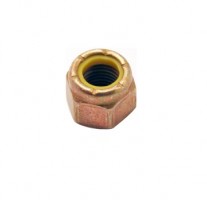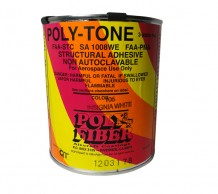Aircraft Spruce Canada
Brantford, ON Canada
Corona, CA | Peachtree City, GA
Chicago, IL | Wasilla, AK
Poly-Fiber Ep-420 Primer White Quart
MFR Model# 8-420W3
Overview
|
This white heavy duty chemical and solvent resistant amine cured primer from Stits is fast drying and corrosion inhibiting. It can be applied and cured to temperatures down to 35°F. Mixing ratio is 2 parts base, 1 part catalyst. Catalyst not included. See Accesories. Epoxy Primer available in quart and gallon sized. Important Notice: All mixed paints are special order and are non-returnable. |
Reference Chart
DESCRIPTION | P/N |
| Base: Quart | 09-05625 |
| Base: Gallon | 09-05630 |
Reviews
Good primer
Poly-Fiber Ep-420 Primer White Quart
Great, only thing we use over fabric or metal. Makes colors more vibrant.
Great primer for steel tubing frames, Im painting it on with a 1 brush. Its just right for painting on with out solvent added and has pretty good working time in small batches and even rolls on well (but not foam rollers it melts them). It covers very well but will probably require a second coat in some places.
This is a great paint to shoot on any 4230 tubing super structure. Lee
Q&A
Please note, Aircraft Spruce Canada's personnel are not certified aircraft mechanics and can only provide general support and ideas, which should not be relied upon or implemented in lieu of consulting an A&P or other qualified technician. Aircraft Spruce Canada assumes no responsibility or liability for any issue or problem which may arise from any repair, modification or other work done from this knowledge base. Any product eligibility information provided here is based on general application guides and we recommend always referring to your specific aircraft parts manual, the parts manufacturer or consulting with a qualified mechanic.
For best results, we recommend to spray it on, but it can be rolled.
Poly Tak fabric cement will not affect EP-420 epoxy primer. EP-420 can be used on clean bare metal tubing.
Per the vendor its between a semi-gloss and a satin. You would have to scuff it before applying a paint coat on top.
If you are using poly-tone, then yes you can spray it on when the ep-420 is tacky.
Per the manual: "Dry/Cure Time: Epoxy primer will dry to the touch in 30 to 60 minutes in most conditions. However, it takes a full seven days at 700 to chemically cross-link to full solvent resistance. So in simplest terms, if you rush applying solvent-borne topcoat paints or fabric cement over the top of primer that has not cured for seven days, you risk wrinkling the primer. This is most probable in the hours immediately following primer application. As time passes in the seven-day cross linking period, the primer gets more solvent resistant and the probability of wrinkling decreases. After seven days, it is impervious to all solvents."

 Aircraft Spruce Canada
Aircraft Spruce Canada




























